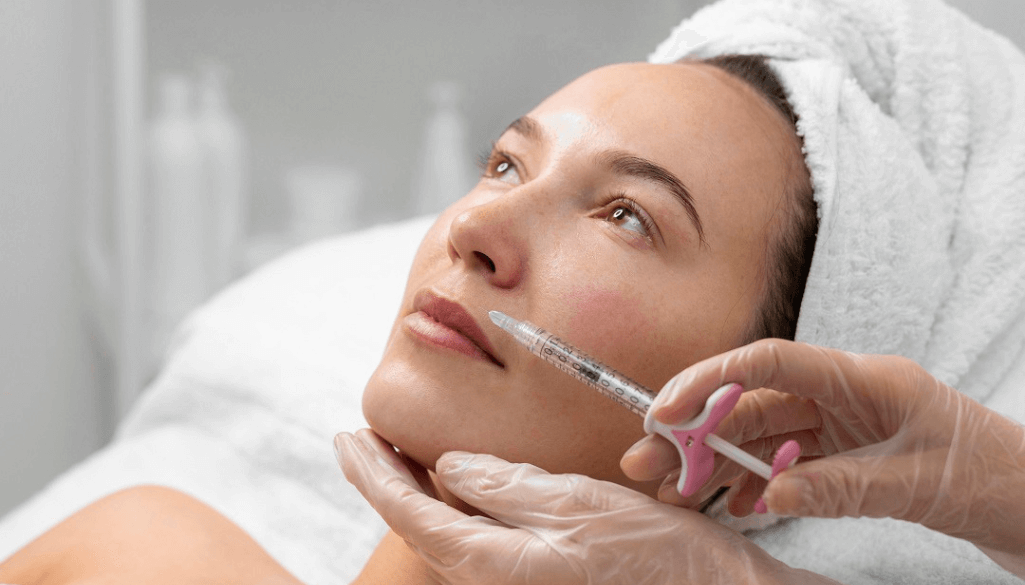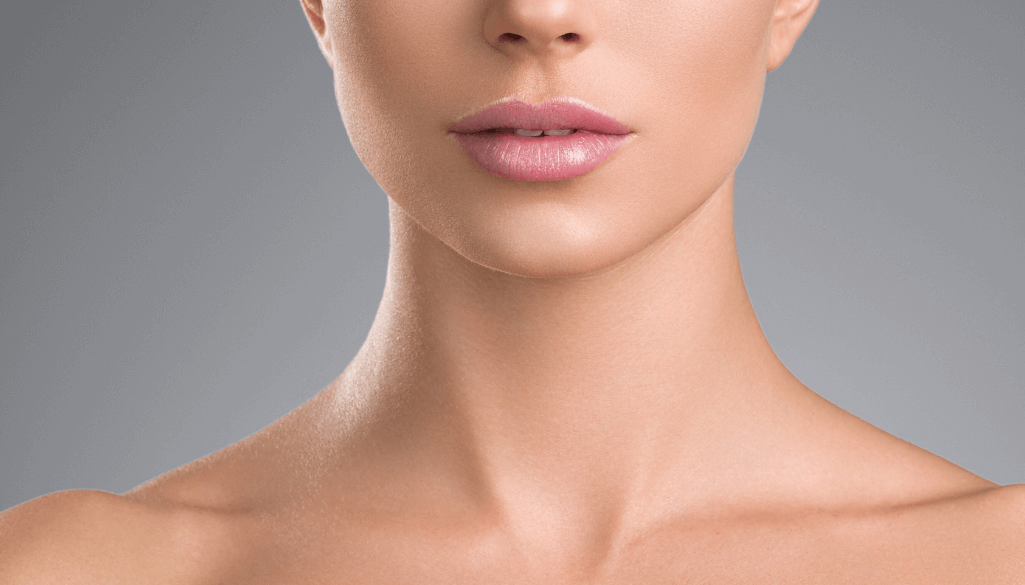Hyaluronic acid and its injections are some of the most popular treatments in modern aesthetics. It can hydrate, smooth, and gently restore the facial features and healthy glow, all naturally. Unlike creams that only work on the surface, hyaluronic acid injections work from within, adding volume where it’s lost and softening lines without surgery or lengthy recovery.
This blog is all about hyaluronic acid and its injections. How do they work, their benefits, and what to expect if you’re considering treatment.
What is Hyaluronic Acid?
Hyaluronic acid, often called HA, is a natural sugar that your body already makes. It is not something “foreign” or strange. In fact, it lives in your skin, joints, and eyes, helping them stay healthy.
The main job of hyaluronic acid is to hold water. Think of it like a sponge that soaks up moisture and keeps it locked in. This is why it is so important for:
- Skin: Keeping it soft, plump, and smooth.
- Joints: Helping them move easily without pain.
- Eyes: Keeping them moist and comfortable.
What are Hyaluronic Acid Injections?
Hyaluronic acid injections are a type of dermal filler. This means a soft gel, made from hyaluronic acid, is gently placed under the skin with a fine needle or cannula.
These injections are designed to:
- Smooth out wrinkles and folds.
- Plump up lips.
- Restore lost volume in areas like cheeks or under the eyes.
- Shape the face for a fresher, more balanced look.
Because hyaluronic acid is already present in the body, these fillers are typically well-tolerated. They blend naturally with your skin and keep it looking soft and flexible, not stiff or “fake.”
What Do Hyaluronic Acid Injections Do? Here are the Benefits
People choose hyaluronic acid injections because they want to look fresher, not different. The results are natural, gentle, and can be tailored to what you need most. Here are the main benefits:
Smooths Wrinkles and Fine Lines
As we age, lines form around the mouth, eyes, and forehead. Hyaluronic acid fillers act like a cushion under the skin, softening these folds and making the face look rested.
Restores Lost Volume
Over time, cheeks, lips, and even hands can look sunken or hollow. Fillers replace that lost volume, bringing back fullness and shape. This gives the face a softer, more youthful outline.
Hydrates the Skin
Hyaluronic acid loves water; it can hold up to 1,000 times its weight in moisture. When injected, it draws in water and keeps the skin hydrated, glowing, and elastic.
Natural-Looking Results
Unlike older fillers, hyaluronic acid moves with your face. This means you still smile, laugh, and frown naturally, without looking stiff or “frozen.”
Immediate Effects
Results are visible right after treatment. You walk out of the clinic looking fresher, with only mild swelling that settles in a few days.
Reversible and Adjustable
A big safety advantage: if needed, hyaluronic acid can be dissolved with an enzyme. This makes it one of the safest filler options; changes are not permanent, and adjustments can be made easily.

Book your personalised consultation at AMS Aesthetics.
- Leading London clinic for bespoke and luxury treatments
- Over 1,000 glowing client reviews and award-winning service
- Expertly designed treatment plans to match your aesthetic goals
Versatile Treatment
Hyaluronic acid injections can address various areas, including wrinkles and fine lines, facial contouring, and more.
In simple words: These injections don’t just hide ageing, they replace what time has taken away, while keeping your look soft and natural.
Areas Treated with Hyaluronic Acid Injectables
Hyaluronic acid injections can refresh many parts of the face and body. Here are the most common areas:
Lips
Fillers can make lips fuller, smoother, and more defined, while softening fine lines around the mouth.
Cheeks
They restore roundness and lift to flat or sagging cheeks, giving the face a youthful shape.
Under Eyes (Tear Troughs)
Fillers reduce hollows and shadows under the eyes, helping you look less tired.
Nasolabial Folds (Smile Lines)
These injections help soften the deep folds that run from the nose to the mouth.
Marionette Lines
They smooth the lines from the corners of the mouth to the chin, which can drag the face down.
Jawline and Chin
Fillers add definition to the jawline and balance to the chin for a sharper profile.
Temples
Restoring volume here lifts the outer brow and improves overall face balance.
Hands
Fillers plump thinning hands, hiding veins and making skin look smoother.
Earlobes
They can restore shape and softness to stretched or ageing earlobes.
Chest, Décolletage, or Even Knees
Hyaluronic injections like Profhilo are injected in these areas to help reduce crepey skin.
Before and After Hyaluronic Acid Injections
Check out these dermal fillers before and after results to understand how hyaluronic injections can enhance your appearance.


Hyaluronic Acid in Dermal Fillers and Profhilo
Hyaluronic acid is the star ingredient in both dermal fillers and Profhilo, but the way they work is quite different.
Dermal Fillers (Juvederm, Restylane, Belotero, Voluma, etc.)
- These are gels made from hyaluronic acid.
- They are placed under the skin to add shape, structure, and volume.
- Great for wrinkles, lips, cheeks, jawline, under-eyes, and hands.
- Results can last 6–24 months, depending on the filler used.
Profhilo
- Profhilo is also made from pure hyaluronic acid, but it’s not a filler.
- Instead of adding volume, it spreads under the skin to hydrate, tighten, and improve skin quality.
- It’s often called a “skin booster” or “injectable moisturiser.”
- Works best for areas with crepey, thin, or sagging skin, such as the face, neck, or décolletage.
- Results appear gradually, with the skin looking fresher, firmer, and more glowing.
Learn ‘Is profhilo worth it?’, to know what it can do for your skin.
Who is the Right Candidate for Hyaluronic Acid Injections?
Hyaluronic acid injections are suitable for many people, but not for everyone. A careful consultation with a qualified doctor or nurse is always the first step.
Good Candidates
You may be a good match if you:
- Want to smooth wrinkles or folds without surgery
- Have thinning lips or loss of volume in cheeks, under eyes, or hands
- Wish to refresh your look but keep it natural
- Are in generally good health with realistic expectations
When HA Injections May Not Be Suitable
Hyaluronic acid fillers are usually avoided if you:
- Are you pregnant or breastfeeding
- Have an active skin infection (such as cold sores or acne in the treatment area)
- Have uncontrolled diabetes or blood-clotting problems
- Are allergic to any of the filler ingredients
- Are on certain immunosuppressive treatments
The Treatment Process: What to Expect
Hyaluronic acid injections are a quick, non-surgical procedure. Most people are surprised by how simple it feels. Here’s what usually happens:
Before Treatment
- Your injector will check your medical history and treatment goals.
- You may be asked to stop blood-thinning medicines (like aspirin or ibuprofen) a few days before, with your doctor’s approval.
- The treatment area will be cleaned, and numbing cream may be applied.
During Treatment
- The hyaluronic acid injection is placed with a fine needle or cannula.
- Many fillers already contain lidocaine (a gentle anaesthetic) to reduce discomfort.
- The process typically takes 20–45 minutes, depending on the number of areas being treated.
After Treatment
- You might notice mild redness, swelling, or bruising; this is normal and fades within a few days.
- Ice may be applied to calm the area.
- Most people return to daily activities the same day.
In short, the treatment is quick, usually well-tolerated, and results can often be seen right away.
Risks and Side Effects of Hyaluronic Acid Injections
Hyaluronic acid fillers are generally very safe, but like any treatment, some side effects can happen.
Common
- Redness, swelling, or bruising at the injection site
- Mild tenderness or small bumps (settle in a few days)
Less Common
- Uneven results
- Allergic reactions
- Longer-lasting swelling
Rare but Serious
- Blocked blood vessels (vascular occlusion)
- Infection
- Skin damage (very rare)
Safety Note: Most side effects are mild and temporary. Choosing a qualified injector and following aftercare advice makes the treatment much safer.
Recovery and Aftercare for Hyaluronic Acid Injectables
Recovery after hyaluronic acid fillers is usually quick and easy. Most people return to work or daily life the same day. Still, good aftercare helps your results last longer and lowers the risk of side effects.
What’s Normal After Treatment
- Mild swelling or redness for 1–3 days.
- Small bruises at injection points.
- Slight tenderness in the treated area.
Aftercare Tips
- Use ice packs to calm swelling.
- Avoid touching or pressing on the treated area.
- Skip hard exercise, saunas, or hot baths for 24–48 hours.
- Avoid alcohol and blood-thinning medicines (unless prescribed by your doctor) for a couple of days.
- Sleep on your back with your head slightly raised the first night.
- Keep the area clean and makeup-free for 24 hours.
Results and Longevity of Hyaluronic Acid Injections
One of the reasons hyaluronic acid fillers are so popular is that you can see results almost straight away. But how long they last depends on the type of filler, where it’s placed, and your body.
When Results Show
- Most improvements are visible immediately after treatment.
- Swelling or small bruises may appear at first but usually settle within a few days.
- Final results look best after about 1–2 weeks, once the filler has fully settled.
Tip: Learn in detail how long do dermal fillers last?
Hyaluronic Acid Injections vs Other Treatments
There are many ways to refresh the face, and people often wonder how hyaluronic acid injections compare to other options. Here’s a simple breakdown:
Hyaluronic Acid Fillers vs Botox
Fillers: Add volume and smooth out folds by filling from underneath.
Botox: Relaxes muscles that cause wrinkles (like frown lines).
Many patients opt to combine the two for optimal results.
Hyaluronic Acid Fillers vs Collagen Fillers
Collagen fillers: these were common years ago, but are used less now. They are harder to adjust to and don’t last as long.
HA fillers: Safer, longer-lasting, and can be dissolved if needed.
Hyaluronic Acid Injections vs Skincare Creams or Serums
Topical creams/serums: Add hydration only on the surface of the skin.
HA injections: Work deeper under the skin, restoring volume and smoothing folds where creams can’t reach.
Many people use both together, i.e., injections for structure and creams for daily skin health.
Hyaluronic Acid Fillers vs Profhilo
Fillers: They shape, lift, and add volume.
Profhilo: It hydrates and improves skin quality, without adding bulk.
They are often combined for both structure and glow.
Hyaluronic Acid Injections Cost
The price of hyaluronic acid injections can vary widely. It depends on the type of filler, the area treated, and the experience of your injector.
Small areas (lips, fine lines): £200–£400
Larger areas (cheeks, jawline): £400–£700
Profhilo: £250–£350 per session (usually 2 needed)
Always choose a qualified injector for safe, natural results, and find the lowest price.
Final Thoughts: Is Hyaluronic Acid Right for You?
Hyaluronic acid injections are safe, versatile, and one of the quickest ways to bring back a fresh, youthful glow. Whether you want fuller lips, softer lines, or an overall lift, the results are natural and long-lasting, with minimal downtime.
Still, the key to great results lies in the hands of a skilled professional. The right injector will understand your unique features and create a balanced, natural look that feels just like you — only fresher.
At AMS Aesthetic in London, our team specialises in dermal fillers using only trusted, high-quality products. If you’re curious about what hyaluronic acid injections could do for you, we’d love to guide you through the options in a safe, patient-focused way. Book your consultation now!
FAQs
1. What does hyaluronic acid do for your face?
Hyaluronic acid helps keep your skin soft, hydrated, and plump. It smooths fine lines and adds a natural, youthful bounce to your face.
2.What’s better, retinol or hyaluronic acid?
Both are useful but work differently. Retinol helps renew skin cells and fight the signs of ageing, while hyaluronic acid locks in moisture, keeping the skin soft and smooth. Many people use them together for the best results.
3. What does hyaluronic acid do for acne?
It doesn’t treat acne directly, but it keeps skin calm and hydrated. This helps repair dryness or irritation caused by acne treatments and supports healthier-looking skin.
4. Does hyaluronic acid help joints?
Yes. Hyaluronic acid cushions your joints by holding water, making movement easier and reducing stiffness or discomfort. It’s often used in joint injections for people with pain or arthritis.
5. What are hyaluronic acid injections for?
These injections restore lost volume, soften wrinkles, plump lips, and improve facial contours. They give a refreshed, natural look without changing your expressions.
6. Is hyaluronic acid good for knee arthritis?
Yes, when injected into the knee, it can ease pain, improve flexibility, and make daily movement more comfortable for many people.













